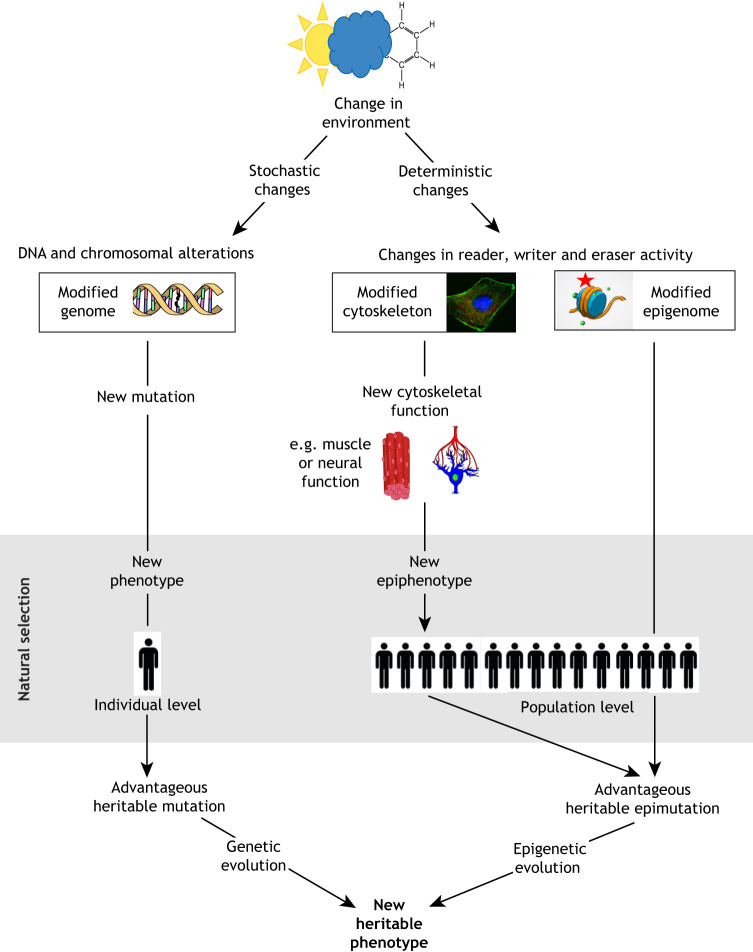Fig. 2.
A comparison of genetic and epigenetic drivers for evolution. Genetic evolution is driven by stochastic DNA alterations. In contrast, evolution driven by epiregulator activity would be deterministic: environmental perturbation of reading, writing or erasing activity of epiregulators would cause specific and predictable changes in the epigenome and epicytoskeleton. For example, decreased oxygen levels inhibit erasers that remove methyl marks, increasing epigenetic (and, we predict, epicytoskeletal) methylation. Increased cytoskeletal methylation could then produce new phenotypes upon which natural selection could act, and perturbations of the epigenome to drive emergence of hereditary epimutations. Thus, the environment determines the activity of epiregulators, and changes in epiregulator activity determine the nature of the modifications that occur to the epigenome and epicytoskeleton. A second distinction is that whereas stochastic DNA alterations occur at the level of the individual, an environmental perturbation that affects chromatocytoskeletal activity has the potential to affect the epicytoskeleton and epigenome of all individuals within an exposed population. Thirdly, perturbation of chromatocytoskeletal activity would be predicted to have an immediate and direct impact on the epicytoskeleton, potentially giving rise to phenotypes upon which natural selection could immediately act. Finally, in contrast to a new phenotype arising from an irreversible DNA alteration, a new epicytoskeleton-dependent phenotype caused by altered activity of an epiregulator would be reversible until fixed in the population by either a hereditary mutation or epimutation.

